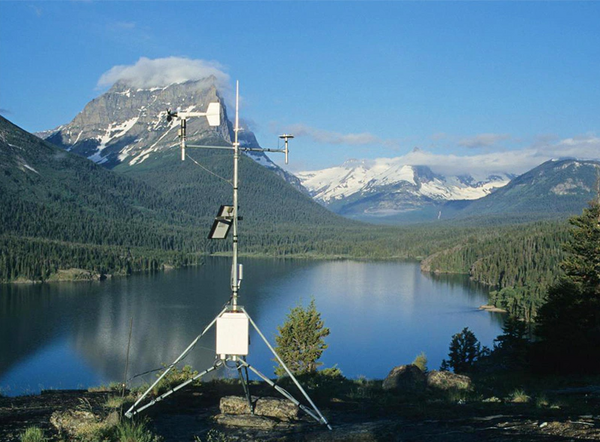Notifications
ALL BUSINESS
COMIDA
DIRECTORIES
ENTERTAINMENT
FINER THINGS
HEALTH
MARKETPLACE
MEMBER's ONLY
MONEY MATTER$
MOTIVATIONAL
NEWS & WEATHER
TECHNOLOGIA
TV NETWORKS
VIDEOS
VOTE USA 2026/2028
INVESTOR RELATIONS
COMING 2026 / 2027
ALL BUSINESS
COMIDA
DIRECTORIES
ENTERTAINMENT
FINER THINGS
HEALTH
MARKETPLACE
MEMBER's ONLY
MONEY MATTER$
MOTIVATIONAL
NEWS & WEATHER
TECHNOLOGIA
TV NETWORKS
VIDEOS
VOTE USA 2026/2028
INVESTOR RELATIONS
COMING 2026 / 2027
 Philip Lori -
May 2, 2024 -
Other -
weather station instruments
-
418 views -
0 Comments -
0 Likes -
0 Reviews
Philip Lori -
May 2, 2024 -
Other -
weather station instruments
-
418 views -
0 Comments -
0 Likes -
0 Reviews

Weather conditions have significant implications for aerospace engineering and space exploration, influencing spacecraft design, launch operations, and mission planning for satellites, rockets, and crewed spacecraft missions. weather station instruments are essential tools for aerospace engineers, mission planners, and space agencies, providing real-time data on weather patterns, atmospheric conditions, and space weather phenomena that enable them to assess weather-related risks, ensure launch safety, and optimize mission success for space missions to Earth orbit, the Moon, Mars, and beyond.
Atmospheric conditions such as wind speeds, wind directions, and upper-level winds influence rocket launches, spacecraft trajectories, and launch vehicle performance during ascent and flight through Earth's atmosphere. weather instruments provide data for monitoring atmospheric conditions at launch sites, assessing weather constraints, and issuing launch weather criteria that guide launch decisions, enable launch countdowns, and ensure launch safety for rockets, satellites, and space shuttles conducting space missions from spaceports, launch complexes, and launch pads worldwide.
Space weather phenomena such as solar flares, geomagnetic storms, and cosmic radiation pose risks to satellite operations, spacecraft electronics, and astronaut health in space environments beyond Earth's atmosphere. weather station equipped with space weather sensors provide data for monitoring solar activity, measuring radiation levels, and forecasting space weather conditions that affect satellite communications, spacecraft operations, and crewed space missions in Earth orbit and interplanetary space, enabling satellite operators, space agencies, and astronauts to mitigate space weather risks and safeguard spacecraft and personnel in space.
Atmospheric dynamics such as atmospheric pressure, temperature profiles, and dust storms influence planetary environments and surface conditions on celestial bodies such as Mars, Venus, and Titan that are targeted for robotic exploration and human missions in the solar system. Weather instruments provide data for monitoring atmospheric parameters, studying atmospheric circulation, and forecasting weather patterns on planets and moons that inform mission planning, spacecraft design, and landing site selection for robotic landers, rovers, and crewed missions conducting scientific investigations and exploration activities on planetary surfaces and in planetary atmospheres.
Climate conditions such as temperature regimes, atmospheric composition, and water resources are essential factors in assessing planetary habitability and potential for life beyond Earth in exoplanetary systems and astrobiology research. Weather stations provide data for studying planetary climates, modeling climate scenarios, and identifying habitable zones that support liquid water, stable temperatures, and environmental conditions conducive to life on planets, moons, and exoplanets in the Milky Way galaxy and beyond, enabling astrobiologists, planetary scientists, and space agencies to search for signs of life and explore the potential for habitability in the universe.
Weather information plays a vital role in space exploration and human settlement, enabling space agencies, mission planners, and astronauts to assess weather risks, plan mission timelines, and support crewed missions to the International Space Station (ISS), lunar surface, and future Mars colonies. Weather stations provide data for monitoring space weather conditions, forecasting solar activity, and assessing radiation risks that affect spacecraft systems, astronaut health, and mission operations in space environments, enabling space agencies and astronauts to plan safe and successful missions, protect human health, and advance human exploration and settlement beyond Earth in the quest for space exploration and discovery.
In conclusion, weather station instruments are essential for aerospace engineering and space exploration, providing real-time data on weather patterns, atmospheric conditions, and space weather phenomena that enable aerospace engineers, mission planners, and space agencies to assess weather-related risks, ensure launch safety, and optimize mission success for space missions to Earth orbit, the Moon, Mars, and beyond. By monitoring atmospheric conditions, assessing space weather hazards, and supporting planetary exploration and human settlement, weather stations contribute to the advancement of space science, exploration technology, and human spaceflight capabilities that expand our understanding of the universe, inspire future generations, and pave the way for sustainable human presence and exploration beyond Earth in the cosmos.
